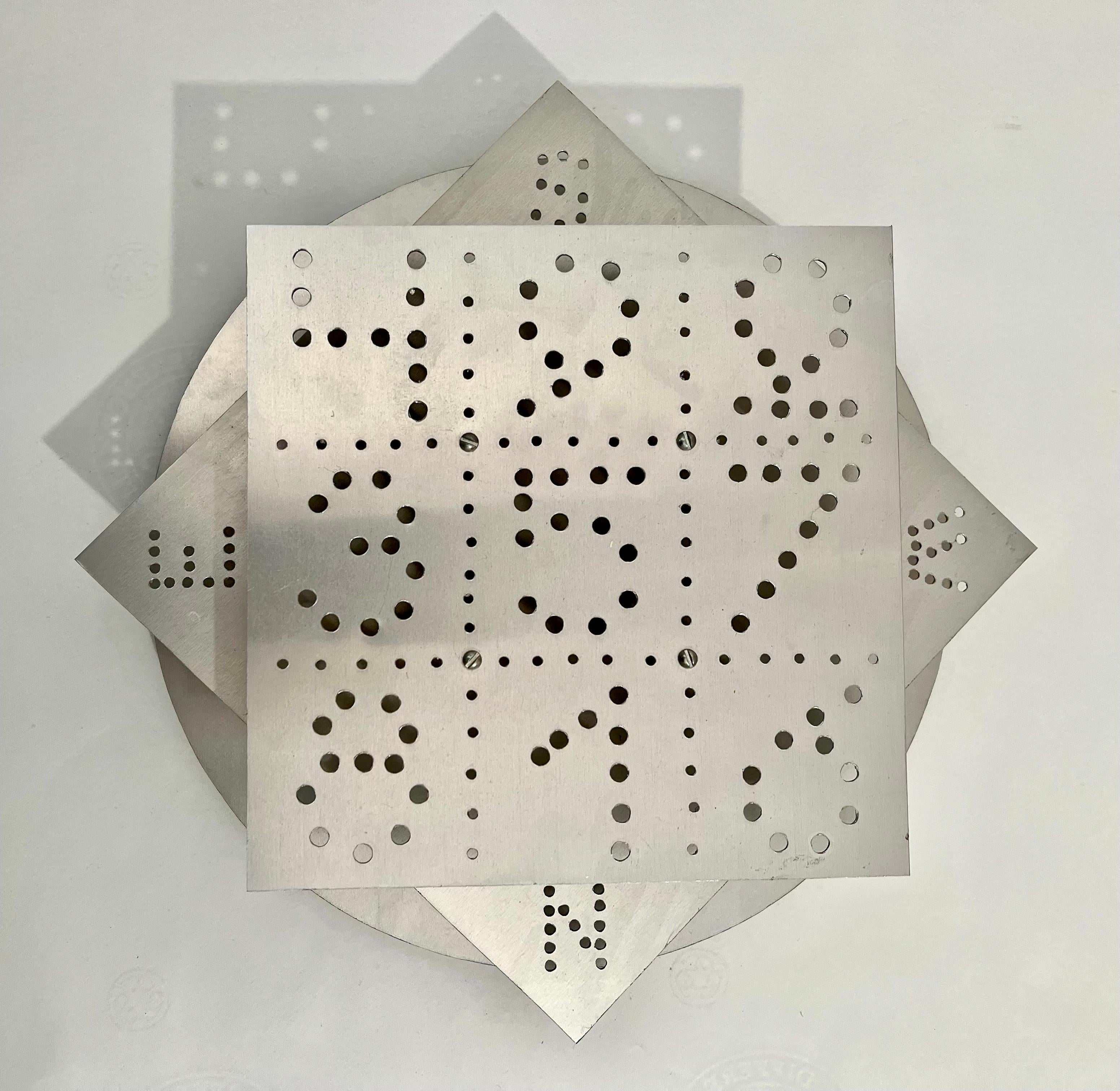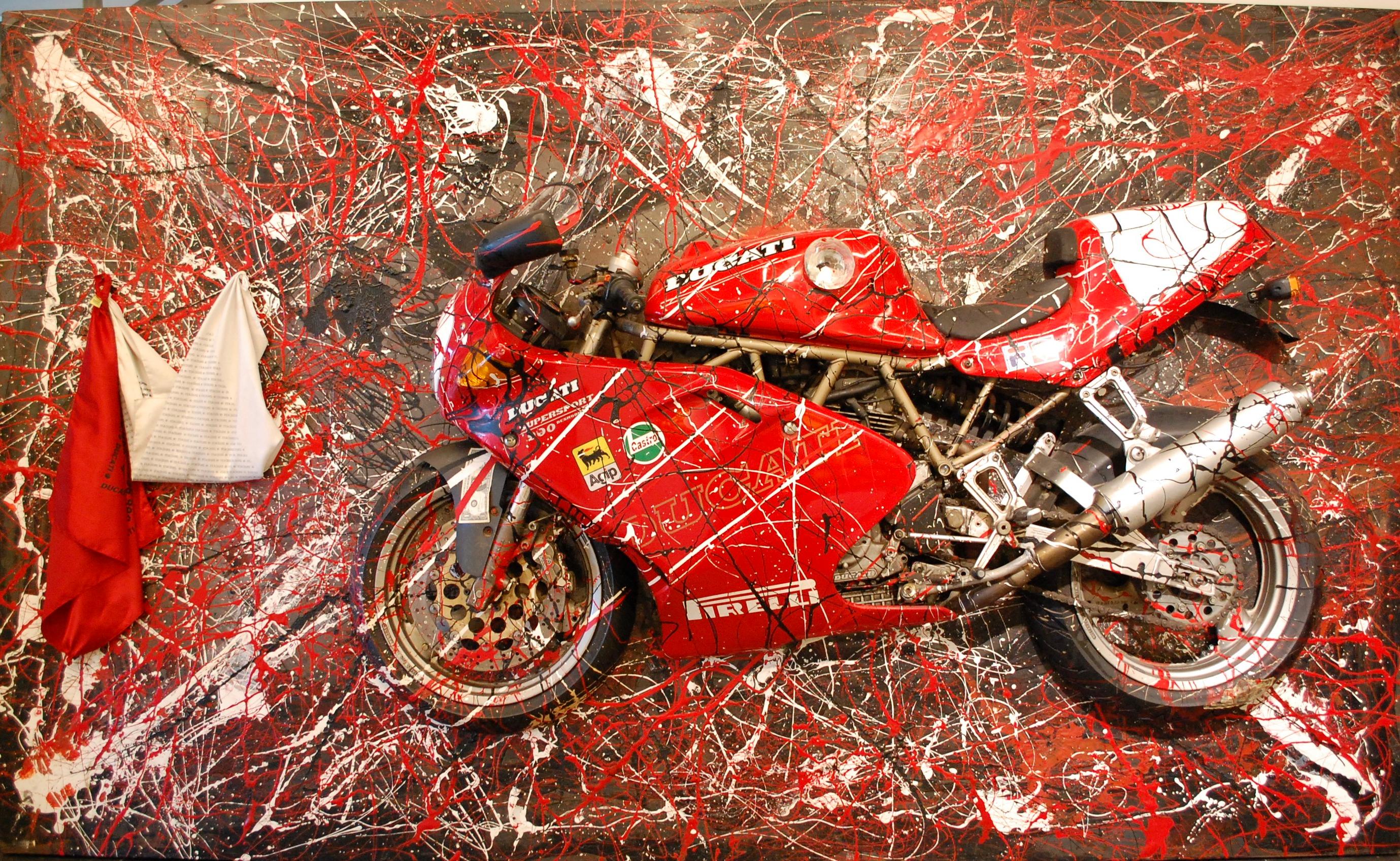Items Similar to Sculpture, Cinder Blocks For my Father
Want more images or videos?
Request additional images or videos from the seller
1 of 9
Alberto Montaño MasonSculpture, Cinder Blocks For my Father2005
2005
About the Item
Ash and lead blocks.
Piece made of 3 blocks
Exhibited at the International Art Fair, Zona Maco 2019 in Mexico City.
Exhibited at Mana Contemporary at Jersey City, New Jersey in 2018.
- Creator:Alberto Montaño Mason (1953, Mexican)
- Creation Year:2005
- Dimensions:Height: 9.85 in (25 cm)Width: 15.75 in (40 cm)Depth: 5.91 in (15 cm)
- Medium:
- Movement & Style:
- Period:
- Condition:
- Gallery Location:Cuernavaca, MX
- Reference Number:1stDibs: LU87933914572
About the Seller
No Reviews Yet
Vetted Seller
These experienced sellers undergo a comprehensive evaluation by our team of in-house experts.
1stDibs seller since 2018
- ShippingRetrieving quote...Ships From: Cuernavaca, Mexico
- Return PolicyA return for this item may be initiated within 2 days of delivery.
More From This SellerView All
- E=M2By Elisa CanoLocated in Cuernavaca, MorelosStell sculptureCategory
2010s Contemporary Abstract Sculptures
MaterialsSteel
- Sin TítuloBy Victor GuadalajaraLocated in Cuernavaca, MorelosCarbon Stell The measures are without the baseCategory
2010s Contemporary Abstract Sculptures
MaterialsSteel
- Sin TítuloBy Victor GuadalajaraLocated in Cuernavaca, MorelosMexican contemporary art, geometric, abstract, unique piece.Category
2010s Contemporary Abstract Sculptures
MaterialsBronze
- Thunderbird (2/2)By Marela ZacariasLocated in Cuernavaca, MorelosWood, window screen, plaster, joint compound, polymer and acrylic paintCategory
2010s Abstract Abstract Sculptures
MaterialsPlaster, Wood, Acrylic, Polymer
- Epos IIBy Marela ZacariasLocated in Cuernavaca, MorelosWood, window screen, plaster, joint compound, polymer and acrylic paintCategory
2010s Abstract Abstract Sculptures
MaterialsPlaster, Wood, Acrylic, Polymer
- Thunderbird (1/2)By Marela ZacariasLocated in Cuernavaca, MorelosWood, window screen, plaster, joint compound, polymer and acrylic paintCategory
2010s Abstract Abstract Sculptures
MaterialsPlaster, Wood, Acrylic, Polymer
You May Also Like
- Russian Samizdat Art Conceptual Photo Sculpture Assemblage Gerlovin & GerlovinaLocated in Surfside, FLRimma Gerlovina and Valeriy Gerlovin Clock, 1987-94 Aluminum sculpture, mixed media and c-print photograph construction, c-print, felt tip marker 13 h × 13 w × 4 d in (30 × 30 × 6 cm) Rimma Gerlovina and Valeriy Gerlovin were founding members of the underground conceptual movement Samizdat in the Soviet Union, described in their book Russian Samizdat Art. Based on a play of paradoxes, their work is rich with philosophic and mythological implications, reflected in their writing as well. Their book Concepts was published in Russia in 2012. The work by Rimma Gerlovina and Valeriy Gerlovin is emphatically contemporary. The artist couple were part of the Moscow Conceptualists, their performance Costumes, from 1977, deepened their ongoing work with linguistic semiotic systems and their own bodies. Considering the context in which Gerlovina and Gerlovin made their work—that of political restrictions on public life, of unfreedom, and censorship—their collaborative togetherness must also be read as a space of possibility for political community and resistance. Rimma Gerlovina’s hair is featured prominently in the art of the Gerlovins as a constructing element of the body. Used for the linear drawings her braids transmit transpersonal waves reminiscent of an aura of live filaments. Long loose hairs function as threads of life; streaming in abundance, they allude to Aphrodisiac vitality and Samsonian strength. On the other hand, they are the haircloth worn during mourning and penitence. In New York they continued to make sculptural objects, and their photographic projects grew into an extended series called Photoglyphs. In their photographs, they use their own faces to explore the nature of thought and what lies beyond it. Since coming to the United States in 1980, they had many exhibitions in galleries and museums including the Art Institute of Chicago. The New Orleans Museum of Art launched a retrospective of their photography, which traveled to fifteen cities. Group exhibitions include the Venice Biennale, the Guggenheim Museum, New York, Smithsonian National Museum of American Art, Washington D.C., Bonn Kunsthalle, Germany, Tokyo Metropolitan Museum of Photography, State Tretyakov Gallery, Moscow, and others. Samizdat or “self-published” began in the Soviet Union, and Samizdat art consists mainly of books and magazines published and distributed by the artists who made them. Samizdat art has sources in the innovative books and magazines turned out by the early 20th century Russian avant-garde—artists and writers like Olga Rozanova, Vladimir Mayakovsky, El Lissitzky, and Alexander Rodchenko. Artists as varied as Alexander Archipenko, Leon Bakst, Marc Chagall, Naum Gabo, Alexandra Exter...Category
1980s Conceptual Figurative Photography
MaterialsMetal
- Russian Samizdat Art Conceptual Compass Sculpture Assemblage Gerlovin, GerlovinaLocated in Surfside, FLRimma Gerlovina and Valeriy Gerlovin Compass, 1988 Aluminum sculpture, mixed media and c-print photograph construction, c-print, felt tip marker 12.5 h × 12.5w × 4 d in (30 × 30 × 6 cm) Rimma Gerlovina and Valeriy Gerlovin were founding members of the underground conceptual movement Samizdat in the Soviet Union, described in their book Russian Samizdat Art. Based on a play of paradoxes, their work is rich with philosophic and mythological implications, reflected in their writing as well. Their book Concepts was published in Russia in 2012. The work by Rimma Gerlovina and Valeriy Gerlovin is emphatically contemporary. The artist couple were part of the Moscow Conceptualists, their performance Costumes, from 1977, deepened their ongoing work with linguistic semiotic systems and their own bodies. Considering the context in which Gerlovina and Gerlovin made their work—that of political restrictions on public life, of unfreedom, and censorship—their collaborative togetherness must also be read as a space of possibility for political community and resistance. Rimma Gerlovina’s hair is featured prominently in the art of the Gerlovins as a constructing element of the body. Used for the linear drawings her braids transmit transpersonal waves reminiscent of an aura of live filaments. Long loose hairs function as threads of life; streaming in abundance, they allude to Aphrodisiac vitality and Samsonian strength. On the other hand, they are the haircloth worn during mourning and penitence. In New York they continued to make sculptural objects, and their photographic projects grew into an extended series called Photoglyphs. In their photographs, they use their own faces to explore the nature of thought and what lies beyond it. Since coming to the United States in 1980, they had many exhibitions in galleries and museums including the Art Institute of Chicago. The New Orleans Museum of Art launched a retrospective of their photography, which traveled to fifteen cities. Group exhibitions include the Venice Biennale, the Guggenheim Museum, New York, Smithsonian National Museum of American Art, Washington D.C., Bonn Kunsthalle, Germany, Tokyo Metropolitan Museum of Photography, State Tretyakov Gallery, Moscow, and others. Samizdat or “self-published” began in the Soviet Union, and Samizdat art consists mainly of books and magazines published and distributed by the artists who made them. Samizdat art has sources in the innovative books and magazines turned out by the early 20th century Russian avant-garde—artists and writers like Olga Rozanova, Vladimir Mayakovsky, El Lissitzky, and Alexander Rodchenko. Artists as varied as Alexander Archipenko, Leon Bakst, Marc Chagall, Naum Gabo, Alexandra Exter...Category
1980s Conceptual Figurative Photography
MaterialsMetal
- Merda d'Artista - Merde d'Artiste - Artist's ShitBy Piero ManzoniLocated in New York, NYPiero Manzoni Merda d'Artista - Merde d'Artiste - Artist's Shit, 2013 Sealed tin can in special offset lithograph paper and shrink wrapped sealed with a fingerprint The artist's sign...Category
2010s Conceptual Figurative Sculptures
MaterialsMetal
- HeirloomBy Nancy LarrewLocated in Santa Monica, CAWood, mirrors, wire, plastic, LED lights. Artist statement: "Behind the doors of this cabinet/tower is an infinity mirror and a DNA double helix branded with the word “trauma.” The...Category
21st Century and Contemporary Conceptual Abstract Sculptures
MaterialsWire
- The Fast The Furious & The Nothing DucatiLocated in Lake Worth Beach, FLThe Fast The Furious & The Nothing : Real Racing Ducati 900 motorcycle Artist signed, title on the back. Federico Brondi Zumino (UMA) is an Italian artist, born in Genoa on March 24th, 1972. At the age of five he took his first music lessons in guitar and piano. Federico received his first painting classes from hi mother, Laura De Micheli, the Genoes painter. Upon the age of eleven he began to draw and paint. At the age of 18 he obtained his high school diploma from the Nicolo Barbino artistic High School in Genoa with exemplary marks. At the age of 19 he devoted himself to the study of piano for many years becoming an excellent composer. At age 21 he attended La Linguistica Academia Delle Belle Arti in Genoa, whose president at the time was the artist Raimondo Sirotti...Category
2010s Conceptual Abstract Paintings
MaterialsSteel
- Large Wood Wall Sculpture: "Salvia"By Loren EifermanLocated in New York, NYEiferman invite’s you to immerse yourself in a world where transformed shapes, lines, and colors are all crafted out of nature's detritus. The inspiration for her drawings come from ...Category
2010s Conceptual Still-life Sculptures
MaterialsWood, Mixed Media
Recently Viewed
View AllMore Ways To Browse
Block Sculpture
3 Block
Mexican Metal Sculpture
Used Cinder Blocks
Cinder Block
Memorial Jewelry Vintage
Louis Vuitton Acrylic Box
Collage Louis Vuitton
Jewish Candelabra
Sara Fine Wilson
Joan Gio
Tiffany Stone Properties
Rhino Ceramic
6 Panel Metal Screen
Native American Stitched Art
James Lloyd Wright Furniture
Brenda Taylor
Bronze Relief Mural





